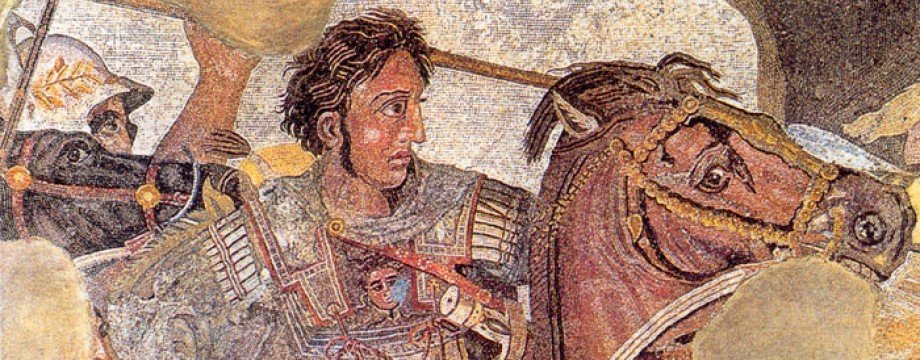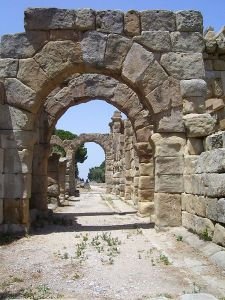The Nature of Curtius
Book Nine Chapter 1-4
For other posts in the series click here
Chapter One
The Indian Interior
Alexander celebrated victory over Porus with ‘a sacrifice of animals to the Sun’. He had much to thank Helios for as the god had ‘opened up to him the limits of the east’.
Later, Alexander told his men that the Indian strength had been ‘shattered’ and all that was left was ‘rich plunder’. His next decision showed that he now considered the end of the expedition to be nigh - Alexander gave instructions for ‘ships to be constructed so that after completing his expedition across Asia he might visit the sea at the world’s end’.
The ships were built using wood from trees in mountainside forests. As the Macedonians cut the trees down, they disturbed ‘snakes of extraordinary size’. Curtius says they also sighted rhinoceroses on the mountains.
Back at the Hydaspes, Alexander founded two cities on either side the river. They were named Nicaea and Bucephala* (after his horse, Bucephalas).
From the Hydaspes, Alexander now ‘crossed the river** and marched into the interior of India’.
At this point, Curtius pauses for a moment to give us a few more details regarding India’s geography. He tells us that its ‘climate is healthy’, with ‘plentiful supplies of spring-water’ and shade thanks to the ‘almost interminable tracts of countryside [which] were covered with forests’. These woods were comprised of ‘tall trees that reached extraordinary heights’.
Curtius mentions one particular tree that had branches ‘like huge tree-trunks [which] would bend down to the ground where they would turn and rise once more, creating the impression of being not a branch rising up again but a tree generated from an independent root’. This is the Banyan tree, which Diodorus also mentions (see here).
Lest we get too comfortable with the idea of India, however, Curtius has a warning for us - ‘large numbers of snakes’ also lived in the country. They ‘had scales which emitted a golden gleam and a venom of unique virulence’. In fact, it was so potent a bite would lead to instant death. Fortunately, Alexander was able to obtain the antidote from natives.
From all that Curtius has told us about India it doesn’t sound like the kind of place that would have a desert. Nevertheless, he says that it was after Alexander had crossed one that he came to the Hiarotis River***. I suspect Curtius’ definition of ‘desert’ is as flexible as his geography.
The Hiarotis was flanked by trees ‘not found elsewhere’. Wild peacocks also lived there. Leaving the river behind, Alexander attacked various tribes, including one whose city was ‘protected by a marsh’. It did not prevent the Macedonians from storming it.
Presently, Alexander came to Sophites’ kingdom. He submitted to the king and (during a banquet?) told Alexander about how fierce his people’s hunting dogs were. To prove it, he had four attack a captive lion. As they bit it, an attendant tugged at one of the dog’s legs. He didn’t let go. So the attendant ‘proceeded to cut off the leg with a knife’. But still the dog did not let go. The attendant, therefore, cut the dog in another part of its body - to no avail. It held firm. Finally, the attendant slashed at it. The dog died holding onto the lion.
Leaving Sophites, Alexander marched to the Hyphasis River.
* Although, see Chapter Three below where Curtius states that Nicaea and Bucephala were founded after his return to the Hydaspes from the Hyphasis River
** I presume that Curtius means Alexander crossed the Hydaspes once again as he has not given any indication of the Macedonians having left it after the founding of the two cities
*** aka the Hydraotis
Chapter Two
The Hyphasis River
For two days, Alexander wondered if he should cross the Hyphasis at the point he had now reached. On the third day, he decided to do so.
The difficulty he faced was that the Hyphasis was very broad and ‘was obstructed with rocks’. While considering the matter, Alexander also discussed the river and what lay beyond it with a local client king named Phegeus whom he had ordered to join him.
Phegeus told Alexander that if he crossed the Hyphasis, he would have a twelve day journey until he came to the Ganges River. Crossing the Ganges would bring him to the Gangaridae and Prasii people who were ruled by a king named Aggrammes who had a mighty army at his disposal.
Phegeus quoted figures of 20,000 cavalry, 200,000 infantry, 2,000 chariots and 3,000 elephants. Incredulous at these figures, Alexander got a second opinion from Porus. He confirmed them but said that Aggrammes was a second rate monarch.
In the end, what concerned Alexander most was neither the size of Aggrammes’ army nor his elephants but ‘the terrain and the violence of the rivers’ - Phegeus must have told him of these during their conversation. He also doubted his soldiers’ commitment. Having grown old as they marched east, would they follow him ‘over rivers that blocked their path, over all the natural obstacles confronting them?’.
To find out, Alexander called his men together for an assembly during which he urged them to follow him east.
Chapter Three
Coenus Speaks for the Men
The assembly at the Hyphasis River continued with Coenus giving Alexander the army’s response. They had had enough. Alexander withdrew angrily to his tent. Three days later he emerged and gave the order for twelve giant altars to be built before they began the journey west.
Leaving the Hyphasis behind, Alexander marched to the Acesines River. There, Coenus died. Of natural causes? Or perhaps the victim of an angry king?
Back at the Hydaspes River, Alexander founded Nicaea and Bucephala for either the first or second time (see chapter one, above) and received reinforcements for the army. The ships that he had ordered to be built (chapter one again) were now ready and so the journey south to the Indian Ocean began.
Chapter Four
Foreboding
The Macedonian fleet sailed as far as the point ‘where the Hydaspes joins the Acesines’. From there, the ships entered the ‘the country of the Sibi’ who claimed descent from Alexander’s ancestor, Herakles.
Alexander marched inland to attack various tribes. One tribe placed 40,000 men on a river bank to stop the Macedonians from crossing it. They failed. After attacking another city, Alexander sailed round its citadel which was ‘protected by three of the largest rivers in India (the Ganges excepted)’ - the Indus to the north and ‘the confluence of the Acesines and the Hydaspes’ to the south.
The fleet sailed through the confluence down a narrow channel created by silt. At the meeting point of the Hydaspes and Acesines, the waters crashed against each other angrily, creating sea-like waves. So violent were these that two of the Macedonian ships were sunk and others beached. Alexander’s ship might also have gone down but for the efforts of his oarsmen. The ship still ran aground, but was at least safe.
The Macedonian army marched on. When it met a large joint Sudracae and Mallian force, the soldiers began to complain. ‘Alexander… had not terminated the war, only changed its location.’ And what if they destroyed the latest army to meet them? ‘Gloomy darkness and a never-ending night brooding over the deep’ awaited them, and ‘… a sea filled with shoals of savage sea-monsters… stagnant waters where dying nature had lost her power.’*
Alexander met his men, pacified them and defeated the joint Sudracae/Mallian army.
* The ellipses in this quotation are in the text

